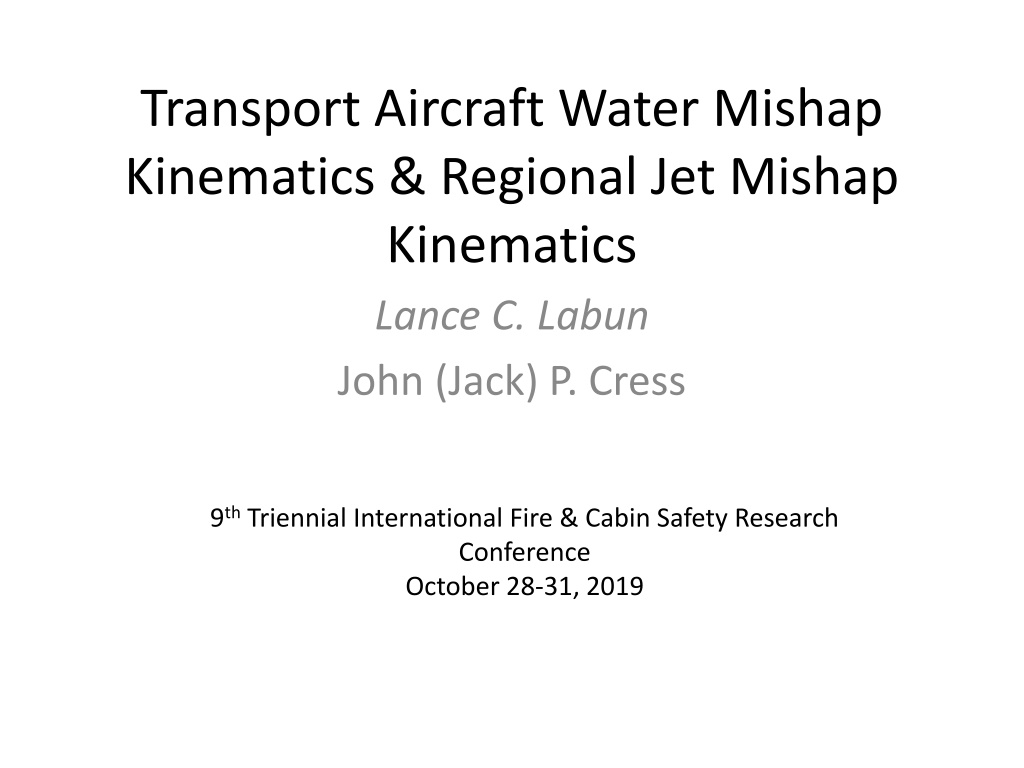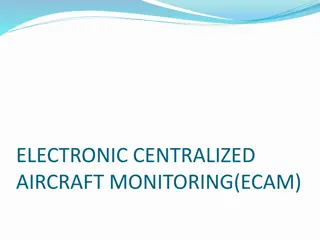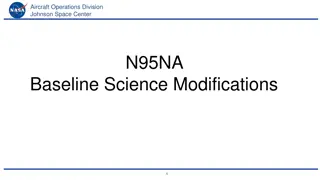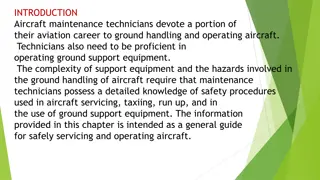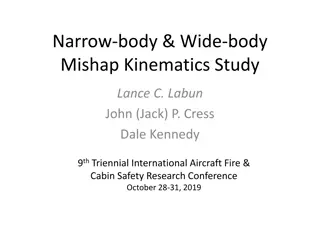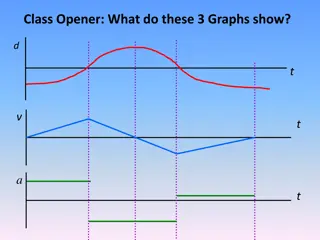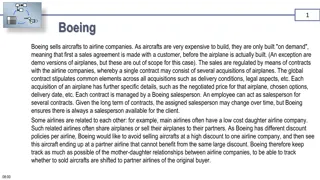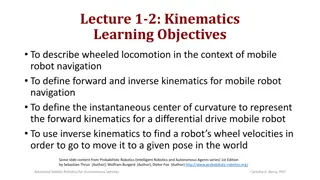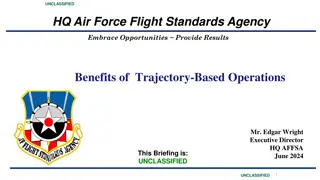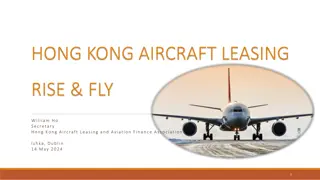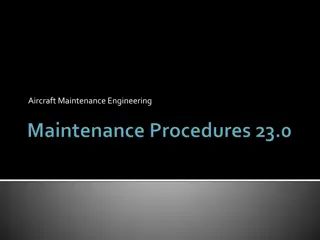Investigating Water Mishap Kinematics in Transport Aircraft
This research study focuses on verifying the ditching requirements in existing regulations and quantifying the kinematics, damage, and injury outcomes of water mishaps involving regional jet aircraft. Criteria for selecting water mishaps and analyzing extracted data are presented, along with scenarios for analysis and aircraft damage assessment by occupied segment.
Download Presentation

Please find below an Image/Link to download the presentation.
The content on the website is provided AS IS for your information and personal use only. It may not be sold, licensed, or shared on other websites without obtaining consent from the author. Download presentation by click this link. If you encounter any issues during the download, it is possible that the publisher has removed the file from their server.
E N D
Presentation Transcript
Transport Aircraft Water Mishap Kinematics & Regional Jet Mishap Kinematics Lance C. Labun John (Jack) P. Cress 9th Triennial International Fire & Cabin Safety Research Conference October 28-31, 2019
Study Objectives Verify that the ditching requirements in existing regulations are consistent with the characteristics of recent mishaps wherein aircraft enter water Quantify the kinematics of regional jet mishaps Quantify the damage and injury outcomes of regional jet mishaps
Water Mishap Selection Criteria All transport aircraft types Range of types: SD-360 to B747 Primary aircraft impact was with water Final resting place of the aircraft was in water Mishap was potentially survivable A thorough investigation was conducted and the documentation was available 22 Mishaps included 1967-2013
Water Mishap Data Extracted Aircraft type & configuration Kinematics: speeds, angles, accelerations Damage: skin, floor, seats, fuselage breaks, survivable volume; by fuselage segment Aircraft conditions: landing gear status, fire Occupants & seats: # by segment Injuries: minor/none, serious, fatal, drowning Evacuation: functionality & usability of portals
Water Mishap Scenarios Mishaps were assigned to a scenario for analysis Ditching with some thrust (3) Ditching without thrust (7) Landing on water short of the runway (5) Impact water during climb out (1) Runway overrun landing or takeoff (6)
Aircraft Damage by Occupied Segment Segments: Cockpit, forward cabin, overwing, aft cabin, tail (reflects break patterns) Breaks between segments recorded (Y/N) Underside skin damage (Widespread / Localized / None) Floor disruption (W / L / N) Seat failure (W / L / N) Loss of occupant volume (W / L / N) Combined to form a Damage Metric (0-112)
Occupant Injury Injury severity: None/minor, serious, fatal Occupants and their injuries were analyzed at the aircraft segment level Injury fractions, (# of injuries/# of occupants) were correlated with: aircraft design, mishap scenario, kinematics, damage metric, external obstacles. Binary logistical models were created to predict injury based on various parameters
Evacuation Fraction of mishaps with emergency evacuations Fraction of doors and exits functional and usable Also recorded the minimum number of escape portals usable
Ditching with & without Thrust Ditching with Thrust (3 mhps) -9.4 Ditching without Thrust (7 mshps) Median Vertical Velocity (ft/s, is downward) -19.5 Median Airspeed (ft/s) 148 187 Flight-path Angle (degrees, is downward) -3.6 -7.0 Pitch angle (degrees , + is nose up) 6.0 8.1 Impact Angle [Pitch Angle Flight-path Angle] (degrees) 9.8 15.1
Damage & Breaks by Scenario Ditching with Thrust (Total Damage Metric / 2 Mishaps) {1 of 3 sank} Ditching without Thrust (Total Damage Metric / 7 Mishaps) Cockpit 0 11 Forward Cabin 0 9 Overwing Cabin 6 5 Aft Cabin 1 6 Tail 0 7 # Fuselage Breaks / # Mishaps 1 / 2 7 / 7
Injuries by Segment Ditching with Thrust (2) (Fatal + Severe Injury Percent) 0 Ditching without Thrust (7) (Fatal + Severe Injury Percent) 60 Cockpit 0 40 Forward Cabin 5 20 Overwing Cabin No occupants 14 Aft Cabin 100 88 Tail
Evacuation Doors Avg. # on Aircraft Doors Avg. # Usable Exits Avg. # on Aircraft Exits Avg. # Usable Scenario Ditching with Thrust 1.67 0.33 2.67 2.50 Ditching without Thrust 2.70 0.80 2.43 1.60 Landing Short of Runway 4.20 2.20 4.00 2.80 Overrun 6.0 3.8 2.66 2.00
Regional Jets 24 mishaps Time range: 1972-2010 Turbojet powered Transport aircraft seating <100 (Avg = 66) Small diameter fuselage, generally minimal underfloor space Wt 12,500 to 100,000 lb as search criterion Dominant design: low wing, 2 aft engines, 4-5 seats per row.
Mishap Scenarios Average Damage Metric for Mishaps Scenario Mishaps (#) Runway Overrun 8 7.8 Compromised Landing 3 6.9 Impacted Terrain Short 4 60.3 Hard Landing Lost Ctrl. 3 12.6 Lost Control TOGA (Take- off or Go Around) 6 73.8
Injuries by Scenario & Segment Cockpit (% Severe) Forward Cabin (% Severe Overwing (% Severe) Aft Cabin (% Severe) Tail (% Severe) Scenario 14 2 2 2 25 Overrun Compro- mised Ldg 0 0 0 0 0 Impact Short 64 I.D. I.D. I.D. N.O. Ldg Lost Control 13 28 0 0 N.O. TOGA Lost Ctrl I.D. = Insufficient Data N.O. = No Occupants. 78 59 80 97 86
Evacuation Portals Doors Avg. # on Aircraft Doors Avg. # Usable Exits Avg. # on Aircraft Exits Avg. # Usable Scenario Overrun 2.38 1.57 1.75 1.13 Compro- mised Ldg 3.33 3.00 3.00 2.00 Impact Short 1.50 0.33 1.50 0.33 Landg Lost Control 2.00 0.67 2.00 2.00 TOGA Lost Control 1.67 0.33 2.67 0.25
Acknowledgments Funded by Federal Aviation Administration Joseph Pellettierre & Alan Abramowitz Funded through: National Institute for Aviation Research, Wichita State University John Tomblin, Labun, L.C.; Cress, J.P.; STUDY OF TRANSPORT AIRCRAFT WATER MISHAP KINEMATICS AND REGIONAL JET MISHAP KINEMATICS; DOT/FAA/TC- 17/52 for Federal Aviation Administration, October 2017.
